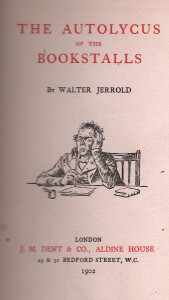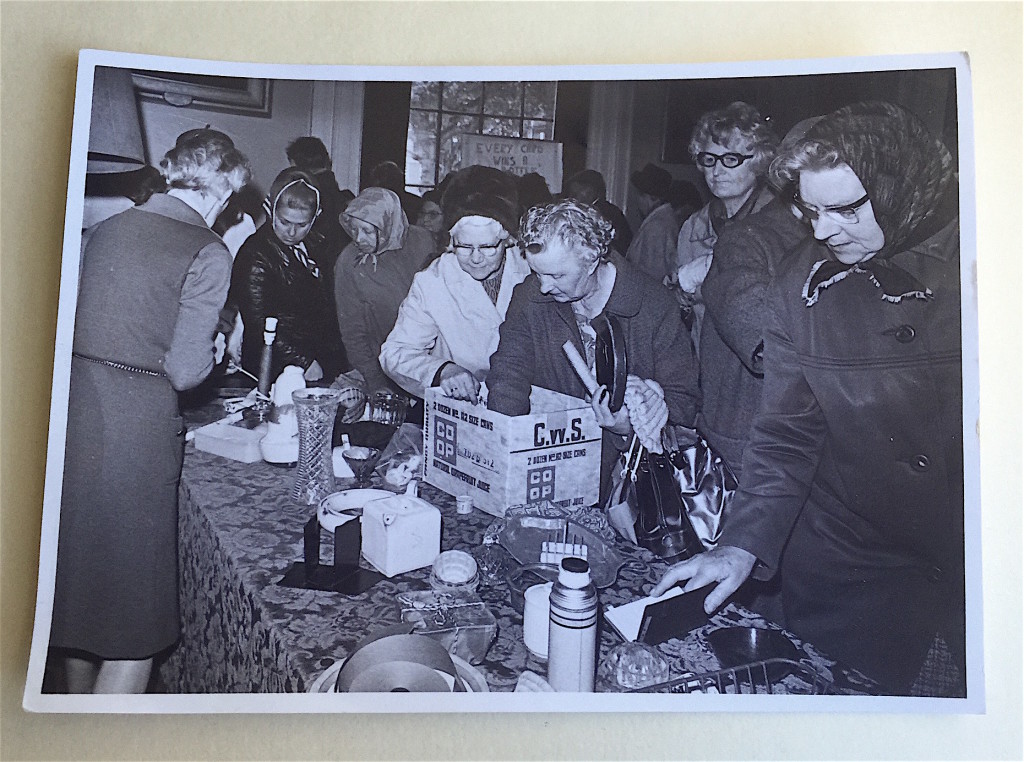 We at Jot 101 had not imagined the travel writer and biographer Walter Jerrold ( 1865 – 1929 ) to be a frequenter of second-hand bookstalls, but there he is as an unabashed collector of ‘unconsidered trifles ‘ in Autolycus of the Bookstalls (1902), a collection of articles on book-collecting that first appeared in The Pall Mall Gazette, Daily News, the New Age, and Londoner.
We at Jot 101 had not imagined the travel writer and biographer Walter Jerrold ( 1865 – 1929 ) to be a frequenter of second-hand bookstalls, but there he is as an unabashed collector of ‘unconsidered trifles ‘ in Autolycus of the Bookstalls (1902), a collection of articles on book-collecting that first appeared in The Pall Mall Gazette, Daily News, the New Age, and Londoner.
But as we already knew him as a biographer of Charles Lamb we should have known better, and indeed he mentions Lamb several times in his book. Jerrold’s range as a bibliophile was wider than Lamb’s, but he seems to have been particularly drawn to writers of the Romantic period. He wrote about collecting Thomas Hood, Cobbett, Coleridge, Southey, and Rev Sydney Smith, while also mentioning books on Oliver Cromwell and Ruskin. In addition, he appears to have rather liked association copies of all dates, and boasted that he had ‘snapped up ‘volumes bearing the signatures of Cardinal Manning, George Eliot, Sydney Smith and Thomas Noon Talfourd at ‘Metropolitan stalls’ in recent years. Jerrold was also tickled at the idea of buying books that had been displayed in the windows of very unliterary shops—in one particular instance an ‘ oil and colourman’s shop in the Seven Dials’, where a first of Ruskin’s Political Economy of Art and a Tennyson signed by George Eliot rubbed shoulders with ‘ soap, soda, pickles and jam ‘. Finding literary treasures in unlikely stores was probably more common in Jerrold’s time than it is now, although your Jotter does recall his first entry into collecting back in 1968, when he found an odd volume of the fifth edition of Johnson’s Dictionary and a battered early edition of Gay’s Fables, complete with nice copper plates, in the window of a car mechanic’s shop opposite Sketty Library in Swansea, along with spanners and a grease gun. After negotiating with the mechanic he secured the two tomes for just 2/6 ( 12p ).
Jerrold favoured ‘ Booksellers’ Row ( aka Holywell Street, off the Strand ), a disreputable area cleared for the construction of Aldwych c 1900, from where he moved to ‘ that newer Booksellers’ Row which has sprung up in Charing Cross Road ‘, itself a product of slum clearance a little earlier. He also ( in passing ) mentions the stalls in Farringdon Street, for so many decades dominated by the Jeffrey family (see earlier blog in Bookride) , and Aldgate, in addition to the New Cut opposite Waterloo station. The two latter sites went many years ago and following the demise of George Jeffrey, the Farringdon bookstalls, where a lucky punter a few decades ago bought an early sixteenth century scribal copy of a work by Sir Thomas More for a few pounds, folded within a year or so. Today the only surviving ‘Booksellers’ Row ‘ is in Charing Cross Road. Continue reading



